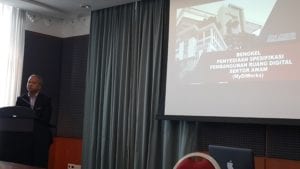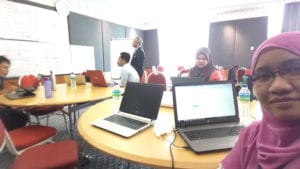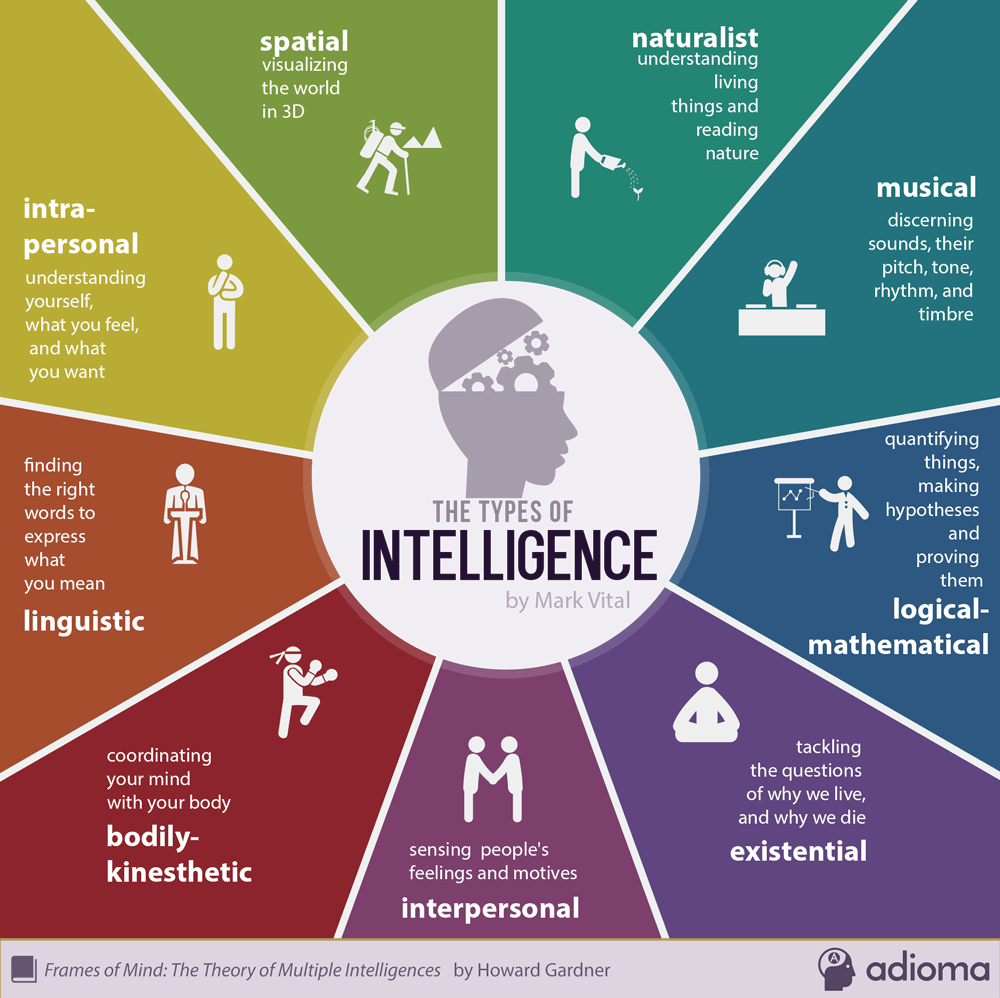by nurazaliah | Aug 28, 2018 | conference, journal, publication, research
How do I write an abstract?
The format of your abstract will depend on the work being abstracted. An abstract of a scientific research paper will contain elements not found in an abstract of a literature article, and vice versa. However, all abstracts share several mandatory components, and there are also some optional parts that you can decide to include or not. When preparing to draft your abstract, keep the following key process elements in mind:
- Reason for writing: What is the importance of the research? Why would a reader be interested in the larger work?
- Problem: What problem does this work attempt to solve? What is the scope of the project? What is the main argument/thesis/claim?
- Methodology: An abstract of a scientific work may include specific models or approaches used in the larger study. Other abstracts may describe the types of evidence used in the research.
- Results: Again, an abstract of a scientific work may include specific data that indicates the results of the project. Other abstracts may discuss the findings in a more general way.
- Implications: What changes should be implemented as a result of the findings of the work? How does this work add to the body of knowledge on the topic?
by nurazaliah | Aug 27, 2018 | research
POINTS TO PONDER
Interesting write up related to my current research area ” Digital Workplace”
The Future of Work and Employment in the 4th Industrial Revolution
Stream Leader: Professor Valeria Pulignano, KU Leuven, Belgium
Employment and the character of work are changing as the result of increased digitalization, robotization and use of the Internet. The emergence of these new technologies contributes to shifting the boundaries between human and machine capabilities, with dramatic implications on individual jobs and their working conditions as well as the knowledge and skills of human capital alike (Valenduc and Vandramin, 2016). In particular, several studies emphasise a shift towards the ‘commodification’ or ‘marketisation’ of knowledge (Fleissner, 2009). Specifically, it is claimed that recent technological innovations lead to a major shift in the boundary between codified and tacit knowledge, to the detriment of the latter (Brynjolfsson and McAfee, 2015). Regarding what the social effects of this shift will be, some scholars argue that machines and robots will replace human capital. This is because technological innovation within the field of big data processing requires a new way to classify tasks (cognitive and manual as well as routine and non-routine) and skills, which will dramatically change the way of working (Autor et al., 2003; Frey and Osborne, 2013). On the other hand, it is argued that society needs to learn to work together with robots i.e. ‘race with the machine rather than against it’ (Brynjolfsson and McAfee, 2015). Accordingly, the future of work will depend on achieving an optimum balance between the new generation of high-performance machines and human skills, which is a very different perspective to the traditional view of machines as a substitute for human capital espoused earlier by Frey and Osborne (2013) and Autor et al. (2003).
As a society within an increasingly on-demand economy, choices must be made about how to deploy new technologies, and critically to consider the possibility of shaping their impact. Therefore, crucial questions include: what balance will there be among jobs created as the digital wave flows through our economy and society, and which workers will be displaced (if any)? Will the new technologies generate converging trends in how enterprises will interact with customers and employees? If so, why? What will be the conditions (or factors) for successful adaptations within the interconnections of value chains or the creation of digital customer interfaces? Irrespective of whether it may be feasible to catalogue existing work, particularly work that is routine, as likely to be replaced or reconfigured by digital tools, and perhaps to estimate the numbers of such existing jobs that will be digitized away, it may be more difficult to envisage the new jobs which will be redefined and reorganized in the future.
This stream aims to discuss the challenges digitalization, robotization and the use of the Internet and new technologies alike pose for human capital, as well as the way in which to generate new knowledge and emphasise its relevance for policy and practice. We are particularly interested in papers which help in understanding the social implications, and theorize the processes and dynamics, guiding the changes at the intersections of new technology and human capital. We are also interested in empirical papers involving international comparisons. Papers will be considered for a Special Issue of an academic journal or an edited collection.
By all means contact the Stream Leader or Coordinator to discuss your planned contribution(s).
Prof Valeria Pulignano
Professor of Sociology of Labour and Industrial Relations, KU Leuven, Belgium
Valeria.pulignano@kuleuven.be
Dr Puteri Sofia Amirnuddin
PuteriSofia.Amirnuddin@taylors.edu.my
References
Autor D. H., Levy F. and Murmane R.J. (2003) ‘The skill content of recent technological change: an empirical exploration’, The Quarterly Journal of Economics, 118 (4): 1279-1333.
Brynjolfsson E. and McAfee A. (2015) The second machine age. Work, progress and prosperity in a time of brilliant technologies, New York, W. W. Norton & Company.
Fleissner P. (2009) ‘The “commodification” of knowledge in the global information society’, Triple-C, 7(2): 228-238.
Frey C. B. and Osborne M. A. (2013) The future of employment: how susceptible are jobs to computerisation?, Oxford Martin School Working paper, Oxford, Oxford University.
Valenduc G. and Vandramin, P. (2016) Work in the digital economy: sorting the old from the new, ETUI Working Paper 2016.03
by nurazaliah | Aug 21, 2018 | research, statistics
a moderator variable is (penyederhana) one that influences the strength of a relationship between two other variables, and a mediator variable (penengah/pengantara) is one that explains the relationship between the two other variables. Mediation analysis facilitates a better understanding of the relationship between the independent and dependent variables when the variables appear to not have a definite connection
As an example, let’s consider the relationship between social class (SES) and frequency of breast self-exams (BSE).
Age might be a moderator variable, in that the relation between SES and BSE could be stronger for older women and less strong or nonexistent for younger women.


Education might be a mediator variable in that it explains why there is a relation between SES and BSE. When you remove the effect of education, the relation between SES and BSE might disappear.



by nurazaliah | Aug 19, 2018 | HowTo, publication
By Robert Enslin | Last Updated – April 2014 | Tags – how to write a research paper, preparing for a research article, how to publish a paper in an international journal, scholarly journal, academic journal, publishing in journals
“ This article will help you to write and publish your research paper. Research Scholars doing PhD it is mandatory to publish their research papers at international level academic Journals or scholarly (Peer Reviewed) journals. And Many of the students who will apply for further studies in technical courses will discover that relevant published research papers help during the admission process. So here I am trying to post some guidelines that you can follow … ”
1. Preliminary
The first activity for publishing a technical paper is to figure out your technical area of interest. Make sure you had carried out enough studies on the basics of that topic. Then you have you to update yourself on the ongoing technical happenings in your chosen field. You can do this by
1) Reading and googling a lot of technical papers. There are a lot of journals and IEEE papers floating around in the net.
2) Go to one or more conferences, listen carefully to the best talks, and find out what people are thinking about.
Once you are done with the above-mentioned steps, then you are eligible for writing a paper
2. Read existing Papers
Read everything that might be relevant gives you a different perspective on the focus topic. But be selective too, for not getting too much deviated from your topic of interest. Getting used to simulation software is much useful for simulating your work. You can find a lot of time during the days and utilize those holidays & free days.
3. A jump start
When you first start reading up on a new field, ask your fellow researcher what the most useful journals and conference proceedings are in your field, and ask for a list of important papers that you should read. This activity will give you a jump start.
4. Crack the jargons and terms
One of among the tough nuts to crack is to understand the paper published by others. The easiest way is to is by reading it many times. The more times you read the more will be revealed to you. Keep the Internet handy so that you can crack the jargons and terms, which you may find strange.
5. Write down your studies
Write down speculations, interesting problems, possible solutions, random ideas, references to look up, notes on papers you’ve read, outlines of papers to write, and interesting quotes. Read back through it periodically. Keeping a journal of your research activities and ideas is very useful.
7. Bits and pieces together
Now you can identify important open problems in your research field and also you will be very much aware of what you are doing and what you have to do. The more you go, you’ll notice that the bits of random thoughts start to come together and form a pattern, which may be a bright enough for a good paper.
8. Simulation software easies
Please don’t pick overly ambitious topics; instead, identify a realistic size problem. Gather the Matlab files available on the Internet that is related to your topic and simulate it for the claimed results. Please don’t expect the Mfiles readily available for a solution published in a paper. But you can make it of your own by modifying and adding. Believe me, Matlab is a very easy tool! Once you are able to get the simulated outputs of your solution, you can carry on for making a paper out of it.
9. The essence of your work
The essence of your work can be diagnosed by analyzing below listed points. We can increase the maturity of the paper by improving these.
Significance: Why was this work done? Did you solve an important problem of current interest or is it an obscure or obsolete problem?
Originality/Novelty: Is your approach novel or is it tried-and-true? Did you need to develop new tools, either analytical or physical?
Completeness: Have you tested a wide range of scenarios, or is this just a simple proof-of-concept?
Correct: Is your solution technically sound or are there errors? [3]
Consider improving the same.
10. Anatomy of Paper
Generally, a paper has seven sections and a maximum of four pages. They are
1. Abstract,
2. Introduction,
3. Existing techniques,
4. Your contribution,
5. Results and
6. Conclusion.
11. The procedure
As a part of your paper publication, you can start documenting the ‘existing techniques’ from the scrap journal you did during the studies. Here you have to extract what all are the techniques existing as a solution for the particular problem and the pros and cons of those.
Next, document the ‘introduction’ about what is the topic and what you are going to do. Better to keep it short. Follows your contribution and the simulated results.
1. Describe the problem
2. State your contributions
“Abstract” is one section you can work on in the last, as it has to cover the all the sections very briefly. Please note that Abstract makes the committee members decide whether or not to read your paper. Generally, four lines are sufficient for this.
1. State the problem
2. Say why it’s an interesting problem
3. Say what your solution achieves
4. Say what follows from your solution
12. Section by section
The divide-and-conquer strategy works on a day-to-day level as well. Instead of writing an entire paper, focus on the goal of writing a section, or outline. Remember, every task you complete gets you closer to finishing your paper.
13. Get a pre-review
Now your paper is ready. You can ask your peers or professors to review your paper. Next is to find the right place to publish it. You can start off with national level conferences, which often gets conducted in many universities. Then once you gain a level of confidence, you can proceed to international conferences and journals.
14. Read the reviews carefully
This is really, really, really hard. Only a small proportion, 5 to 10 per cent, are accepted the first time they are submitted, and usually, they are only accepted subject to revision. In fact, anything aside from simply “reject,” Neal-Barnett reminds, is a positive review. These include:
* Accept: “Which almost nobody gets,” she says.
* Accept with revision: “Just make some minor changes.”
* Revise and resubmit: “They’re still interested in you!”
* Reject and resubmit: Though not as good as revise and resubmit, “they still want the paper!”[2]
Read every criticism as a positive suggestion for something you could explain more clearly
15. Don’t panic
After reading the review the first time, put it aside. Come back to it later, reading the paper closely to decide whether the criticisms were valid and how you can address them. You will often find that reviewers make criticisms that are off-target because they misinterpreted some aspect of your paper. If so, don’t let it get to you — just rewrite that part of your paper more clearly so that the same misunderstanding won’t happen again.
It’s frustrating to have a paper rejected because of a misunderstanding, but at least it’s something you can fix. On the other hand, criticisms of the content of the paper may require more substantial revisions — rethinking your ideas, running more tests, or redoing an analysis.
16. Rejected? Be Positive
If your paper is rejected, keep trying! Take the reviews to heart and try to rewrite the paper, addressing the reviewer’s comments. “Remember, to get a lot of publications, you also will need to get lots of rejections,” says Edward Diener, PhD, editor of APA’s Journal of Personality and Social Psychology: Personality Processes and Individual Differences.
17. Common mistakes
Wrong sequence in Figure and Table numbering
Misalignment of columns
Usage of figures from another paper without credit and permission
18. Where to publish
Generally, there are three main choices:
* National Conference: A conference is a right place for beginner scholars since the level of scrutiny is minimal. The conferences will accept papers which detail about the comparison of existing technologies, mathematically proven but practically unproven proposals, etc.
* International Conference: A conference is a good playground for Intermediated scholars. This mostly same as National Conference but the securitization will be more.
Conferences offer rapid time-to-publish, plus you will often get feedback on your work when you present it.
Page lengths and acceptance standards vary widely from conference to conference, but generally, conference papers are shorter than full journal papers. [3]
* Journal: Journal papers are generally the Alfa and Omega of publishing papers and they are considered as more prestigious than conferences
by nurazaliah | Aug 18, 2018 | knowledge

In 1983 an American developmental psychologist Howard Gardener described 9 types of intelligence :
- Naturalist (nature smart)
- Musical (sound smart)
- Logical-mathematical (number/reasoning smart)
- Existential (life smart)
- Interpersonal (people smart)
- Bodily-kinesthetic (body smart)
- Linguistic (word smart)
- Intra-personal (self smart)
- Spatial (picture smart)
What other scientists thought were just soft-skills, such as interpersonal skills, Gardener realized were types of intelligence. It makes sense. Just as being a math whiz gives you the ability to understand the world, so does being “people smart” give you the same ability, just from a different perspective. Not knowing math you may not calculate the rate at which the universe is expanding, but you are likely to have the skills to find the right person who will.











Recent Comments